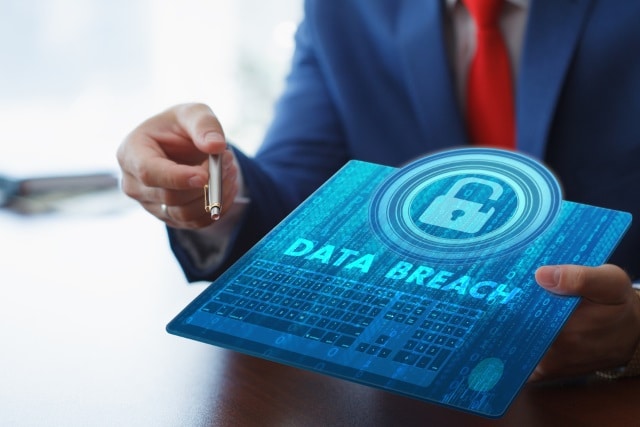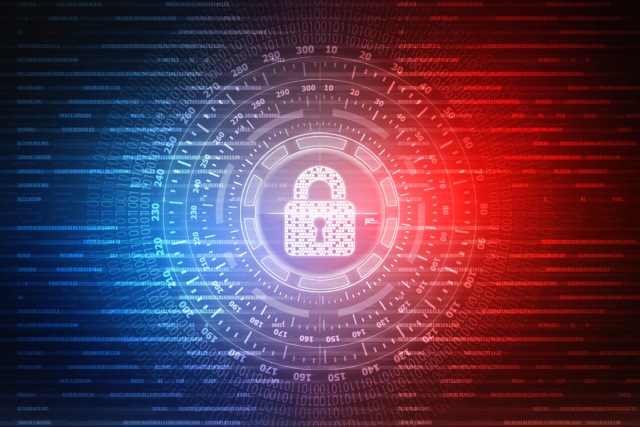
2023 predictions: Automation, right sizing cloud requirements, zero trust and the growing importance of AI observability
2022 was a year of extreme complexities. With the post-pandemic and Brexit fallout, cost of living rises and inflationary pressures, geo-political issues, ongoing climate crisis, supply chain shortages and growing cybersecurity and data security threats, it was undoubtably another unprecedented year.
In fact, ransomware set annual records again, with new ransomware strains emerging. Additionally, cloud adoption continued to grow, while the IT jobs market experienced significant skills shortages. As we look forward to the start of a new year, what trends are on the horizon in 2023 and what issues will organizations be grappling with?

Is AI the future of content marketing?
As technology advances, so does how we market our products and services. And with the rise of artificial intelligence (AI), businesses are beginning to explore how this innovative technology can be used to improve their marketing strategies.
AI offers several content marketing advantages, including personalizing content, targeting specific audiences, and optimizing campaigns. As more businesses adopt AI-powered content marketing, it is becoming increasingly clear that this technology is the future of content marketing. This article will explore the various ways in which AI is shaping the future of content marketing.

The age-old question in 2023: How to deal with ransomware?
It has been a devastating year for organizations in the fight against ransomware, with the news this year being a revolving door of ransomware breaches. Research by Zscaler revealed that there had been an 80 percent increase in ransomware attacks year-over-year.
It’s not just an increase in the number of ransomware attacks but also the catastrophic impact they can have on businesses, employees, customers and the wider popular itself. Shockingly, the average cost of a ransomware attack is $4.54 million, and destructive attacks can increase this cost by over $430,000. So, as 2023 quickly approaches, what ransomware threats should we expect?

How access monitoring keeps providers at bay from data breaches
Health care data breaches affected almost 250 million people from 2005 to 2019. But there are ways your medical practice can prevent these breaches and protect your patients’ private health information. Access monitoring is one such way.
As its name indicates, access monitoring occurs when a person or system’s use (access) of a computer system is evaluated (monitored). It’s a process that observes and analyzes what happened when a user accessed a system during a session.

Paying ransomware is financing crime -- how organizations can break the cycle
Ransomware attacks have dominated the headlines over the last two years and will continue to control the cybersecurity agenda going into 2023. While ransomware gangs continue to be successful in extorting money from businesses, those that do pay demands are financing the ransomware industry and further crime.
With increasing attacks on areas like critical infrastructure and healthcare, it’s now become more than just a business issue. So how did we get here, what are the implications beyond the business world, and what do organizations need to do to break the cycle?

Modern Auth's impact on Exchange Online migrations and what steps to take
Microsoft has turned off Basic Authentication (Basic Auth) for specific protocols in Exchange Online as the company implements Modern Authentication (Modern Auth) for increased protection and user security.
However, the transition to Modern Auth brings several changes, including its impact on Exchange Online migrations. From which migration tools to use to the best migration practices, there are a number of questions IT professionals should consider to execute efficient Exchange Online migrations during this transitional period.

How our outlook on cybersecurity will change in 2023
It’s fair to say over the last year cybersecurity has become one of the hottest topics to discuss. We have seen the issue affect every possible area of life from healthcare and energy to multinational corporations, and even conflicts such as the Russia/Ukraine War.
As a result, cybersecurity (in some shape or form) is in the minds of nearly all major stakeholders, board members and leadership teams across the world. Research by IDC highlighted that European IT security spending will surpass $66 billion in 2026.

How software engineering teams can prepare for 2023
Amidst a fast-moving labor market and fast-growing IT industry inducing constant change, one thing is certain -- software application development teams are under pressure to deliver higher quality user-focused products, securely -- and at pace.
Meanwhile, other challenges have surfaced affecting software development. These include high end-user expectations for easy-to-use, affordable and reliable digital services. This is combined with the increasing complexity and diversity of technologies associated with scale and workload -- and not forgetting drastic skills shortages in software engineering and associated niche tech expertise. IDC predicts the global shortage of full-time developers will increase from 1.4 million in 2021 to 4 million in 2025.

Refurbished vs remanufactured: What's the difference and why does it matter?
Second-hand products have seen a surge in popularity of late as businesses and consumers alike look to save money and live more sustainably. The technology industry hasn’t been without its own mini revolution, seeing refurbished goods flood the market as online marketplaces and new business models disrupt the industry. And this trend is only set to continue with ongoing supply chain issues, the cost-of-living crisis rumbling on and the ever-growing pressures to become more sustainable.
Due to these tensions, finding cost-effective tech that does not drain the planet’s resources can lead you down two paths: Refurbishing or Remanufacturing.

Why IAM alone is no longer sufficient to defend against today's evolving threat landscape
It’s a fact -- today’s businesses are using multiple, fragmented identity management tools to control access; and most are even paying for identity tools that they’re not even using. A recent survey found that 52 percent of organizations manage over 10,000 digital identities and 96 percent of those organizations have multiple identity management tools in place. More doesn’t always mean better protection, as 89 percent of organizations surveyed were still hit by an identity-based cyberattack in the last year.
Identity sprawl is a real thing and it’s an obstacle that is making many organizations more susceptible and more vulnerable to attacks.

No more either/or: How a layered, data-centric approach to security removes outdated restrictions
Viewing security as a modern data challenge is something different from simply recognizing the crucial role of data. IT security has always been about gathering, analyzing and acting on data. But modern cloud data challenges are about handling ever increasing amounts of disparate, differently-structured and unstructured data, from a changing mix of dynamic sources.
The challenge is not about battling to handle data overload. But rather, rethinking the underlying data technologies you use at the core of your security platform, so that as more data floods in, it makes your security tighter and more effective.

Increasing eCommerce sales place onus on retailers protecting customers from downtime and data breaches
With the annual Christmas/New Year shopping season in full swing, high network traffic is expected to accompany the sales throughout December and into 2023. During this time, retailers will expect to see a higher-than-average number of visitors to both their stores and their online websites.
But with soaring inflation and energy price rises causing economic uncertainty, predicting the level of sales traffic that eCommerce sites can expect isn’t an easy task. Therefore, adapting their strategies to ensure they are ready for any level of network traffic must be a priority.

The case for a security program
Modern corporations are fully dependent on their IT infrastructure for their daily operations. Securing an IT infrastructure can be a daunting task. Fortunately, there are common best practices that have found success for some of the biggest companies in the world. These best practices share common traits that can be duplicated to match almost any environment.
Before we begin, let’s examine the past failures of many security professionals. As security managers, we must understand that the most secure environments, regardless of the sophistication of your tools or the talent of your staff, will eventually be compromised by the weakest link in your controls. So how do we manage these weak links? Let’s start by identifying them.

The road to faster EV charging
Electric vehicles (EVs) are more popular than ever. As prices drop and options increase, these once-rare cars are becoming an increasingly viable option for more drivers. However, their limited range and long charging times are holding buyers back.
The average EV can travel just 217 miles before charging, which is fine for daily commutes but not ideal for longer road trips. Of course, gas and diesel cars must also stop to refuel on long drives, but they can fill up in minutes. By contrast, EV charging is often slow. That has to change for these vehicles to become standard, so here’s a glimpse at the future of fast EV charging.

Why Data Quality is critical for business
Since the explosion of technology in the last few decades, data has been increasingly positioned as a silver bullet that can fix all the trials and tribulations of the modern world. For those giant tech companies who amassed mass amounts of (mostly) third-party data, data was the new oil -- sold in barrels to any company wanting to find and scale an audience. But KPIs on data effectiveness became increasingly viable, businesses began to question the amount of data they’d bought.
Parallel to this, governments and consumer rights groups became aware of the increasing volume of unwanted noise being thrown at potential clients and customers. Businesses, both B2B and B2C, became liable for data missteps -- case in point with Meta being fined 17m euro for what amounted to bad data housekeeping.

